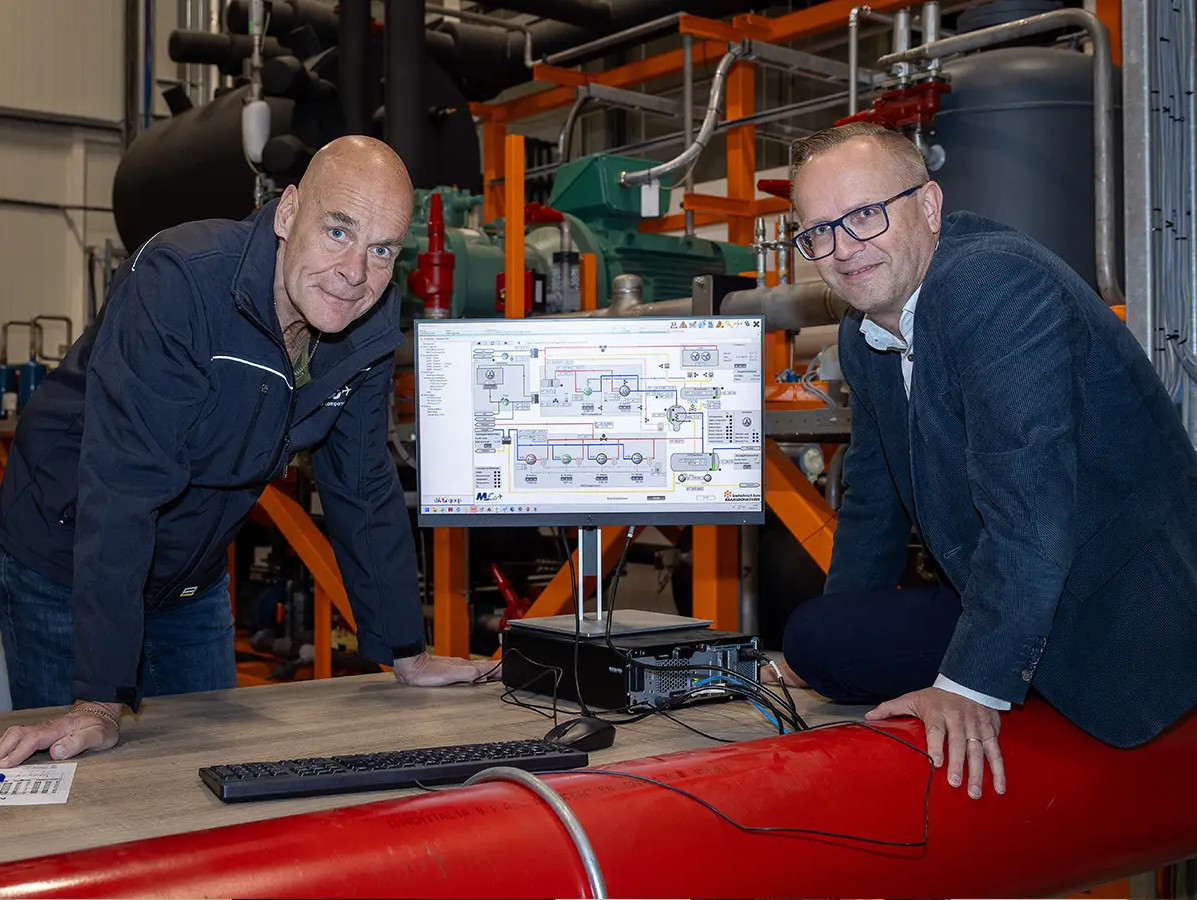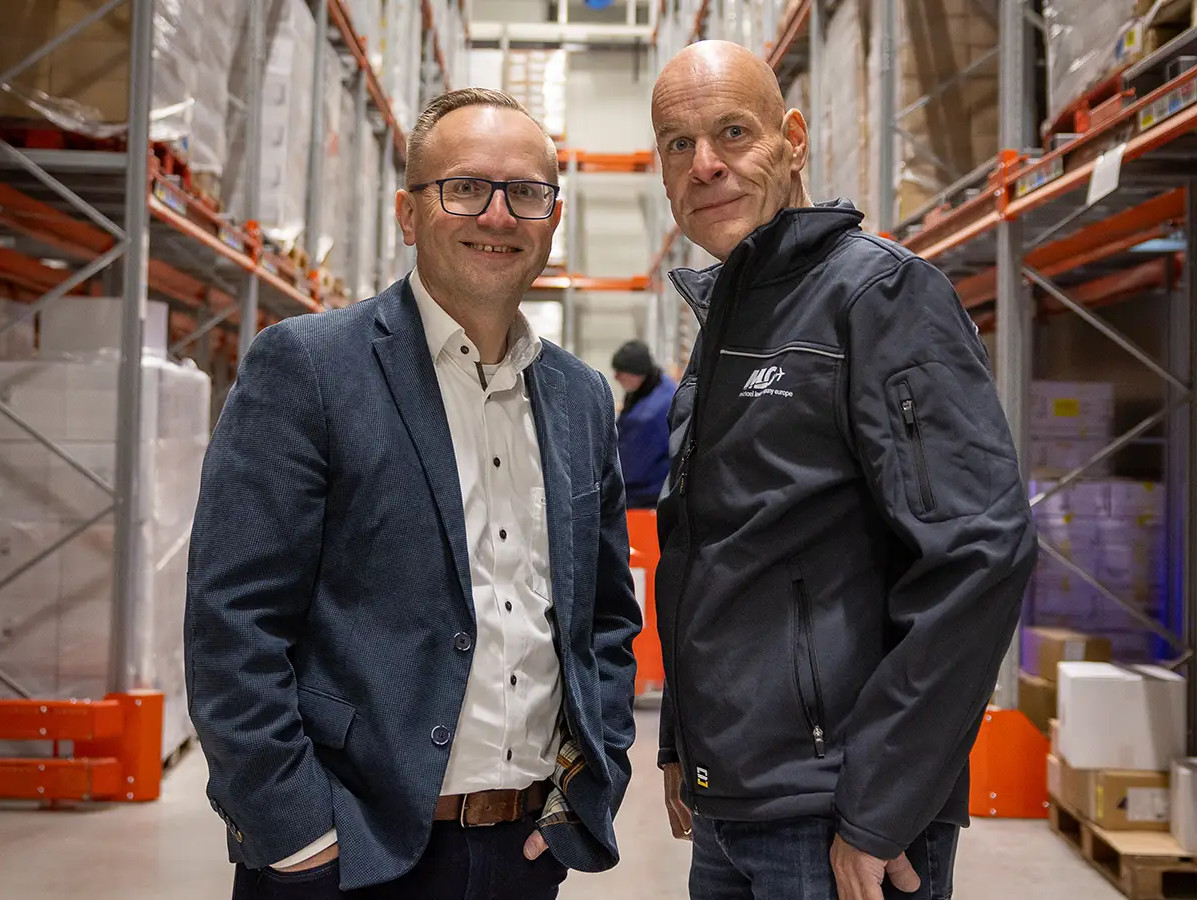
Grid congestion can limit opportunities for growth. And yet, logistics service provider Michael Lewis Company managed to more than double its freezer capacity, while using less energy than before. The secret? Greater efficiency, driven by advanced technology.
It wasn’t that long ago when Michael Lewis Company received a letter from the grid operator. The company received a warming that it had exceeded its contracted capacity, carrying serious risks. “In the worst case scenario, you could even be cut off, which is obviously very undesirable in terms of business continuity,” says facility manager Erik IJsselstein. “And at that point, we had just drawn up plans to expand our freezer capacity.”
The US originated specialist in the storage and distribution of in-flight supplies established its European headquarters and warehouse in Dinteloord in 2020. From North Brabant, meals for the aviation industry are shipped to various clients across Europe. After a rocky start due to COVID-19, the company is now seeing solid growth. Likely the result of its core mission: to always keep the customer satisfied.

Theo Vliek (left) and Erik IJsselstein
Most of the products are deep-frozen and stored under strict conditions in different refrigerated and freezer units. It was the increasing demand from clients, as well as from producers and suppliers wanting to store more inventory, that prompted Michael Lewis Company to expand. But with grid congestion throwing a wrench in the works, there was a real challenge ahead. “We already sensed there was room for improvement in our energy use,” Erik says, “but we couldn’t quite pinpoint how.”
The storage and distribution specialist consulted with various parties. But the proposed solutions, like investing in a completely new installation, weren’t what the company was looking for.
Thanks to a completely different approach, Michael Lewis Company avoided the cost of a new installation. And with better results than expected. The Brabant-based firm not only more than doubled its freezer capacity while staying within its contracted energy limits, but also managed to reduce its energy usage compared to the previous setup. A surprising outcome. Or as Erik puts it: “Awesome. Incredible. A top-notch solution.” The answer lay in making better use of the existing system and optimizing the use of available energy, from both the contracted capacity and the solar panels installed on part of the roof. “Only on part of the roof, because feeding power back into the grid isn’t allowed. So everything we generate is used as effectively as possible.”
The energy optimization was achieved by using freezer units as thermal buffers. When the sun shines and there’s surplus energy, that energy is used to boost the performance of the refrigeration system. Thanks to the cooling effect of the products- which are cooled one to two degrees below the normal target temperature - the system can scale down during other times, using less energy. In simple terms, the product acts as a cold pack. As a result, the energy demand is spread out more evenly throughout the day.

The smart solution came from RBK Food Projects, part of the RBK Group based in Deventer. The division includes an architecture and engineering firm that develops clever solutions for the food industry. For Michael Lewis Company, Food Projects analyzed the current setup and, based on detailed calculations, redesigned the system and created a technical specification, explains RBK’s sales director Theo Vliek. “You want to use energy at the most cost-effective times, so that requires control,” he says. “In that sense, RBK acts as a conductor of energy flows. Our focus in the cold storage industry is always on tranquility, consistent efficiency. That’s why we try to minimise starts and stops, and organise consumption as smartly as possible. At Michael Lewis Company, that’s done by buffering energy. It’s all about taking control.”
That control role is supported by FOPRO, RBK’s own intelligent PLC control system for industrial refrigeration, which has been installed at Michael Lewis Company. It’s connected to other systems and provides real-time insights into operations. This allows for constant adjustments in energy demand, ensuring continued optimization.
And in Dinteloord, they’re more than satisfied. “We’ve already used less energy, and the best summer months are still ahead of us,” Erik says. “For now, we don’t have to worry about energy. In fact, based on our contracted capacity and self-generated power, we could even add another freezer unit.”
Photos: © Peter Roek
Source: Vakblad Voedingsindustrie 2025